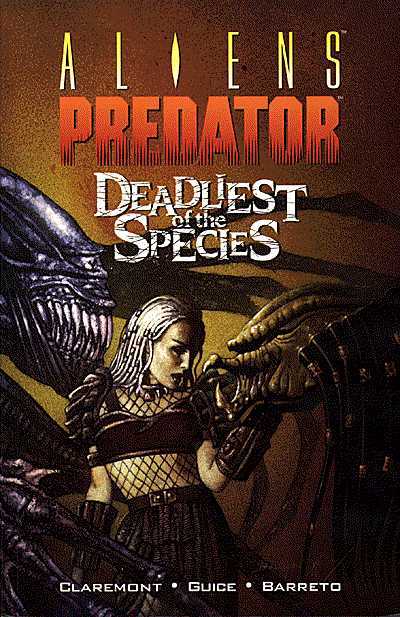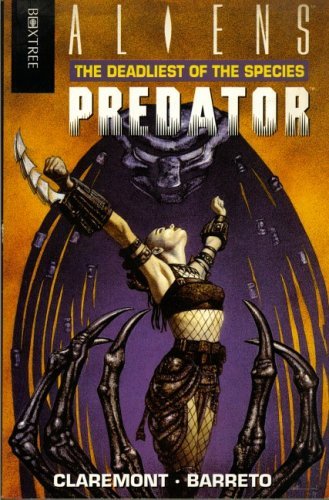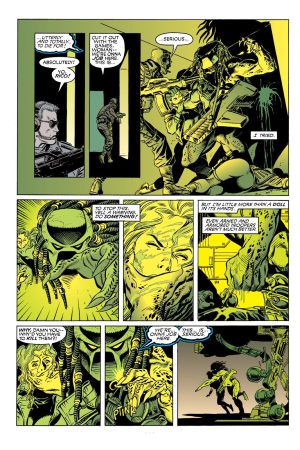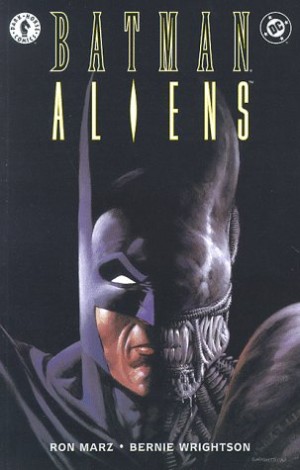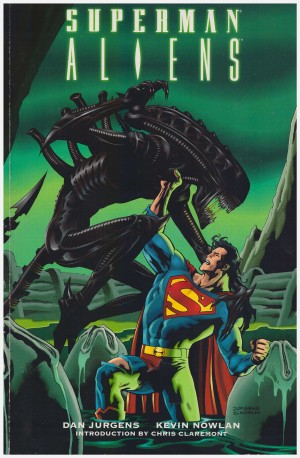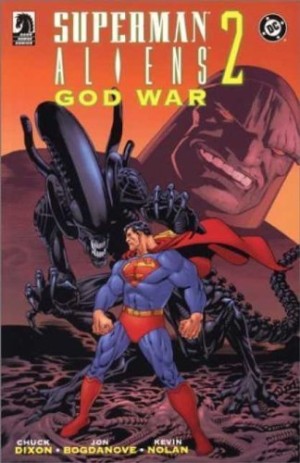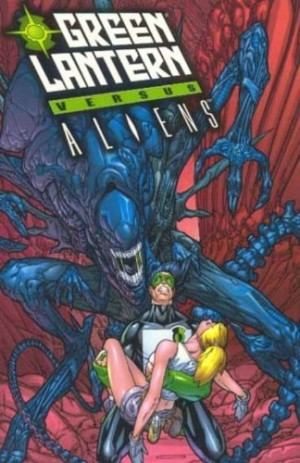Review by Frank Plowright
Deadliest of the Species begins with Caryn Delacroix’s terrifying dreams involving Aliens and Predators. As she’s “the trophy wife” of a billionaire industrialist, what’s perceived as a flaw could weaken his position, so the nightmares are treated as a problem with a solution. Caryn is then abducted by what readers see as a Predator, but not recognised by the Delacroix staff.
Chris Claremont was a prestige writer to follow the earliest Aliens vs. Predator stories, and he distances this from them by exploring further into the future, one where Aliens are known to humanity. Early scenes show how life is for the corporately wealthy, displaying technological possibilities open to them. It’s intended as set-up and tease in barely featuring either of the alien species, but typifies the remainder in being a real hard slog. If this has editorial oversight it doesn’t show, and reads as if Claremont is a marquee name, so he’s been left to his own devices. The result is pages swamped with words and decompressed storytelling giving the impression Claremont is writing a novel and any artwork is incidental.
It’s further hampered by the recurring cheat of dreams presented as reality or training simulations. Once is fine, twice less acceptable, and more completely unacceptable, undermining everything for their frequent use. Why bother investing in anything that happens if it’s revealed as false when the page turns? Events are complicated further by flashbacks and the technological ability to assume someone else’s form. If you lose concentration, which is easy given the word count, you’ll be left wondering what’s going on. Not that all stories have to be simple, but so much of Deadliest of the Species is plain unnecessary, extending a six chapter plot to a dozen chapters.
A third of the way through Eduardo Barreto replaces Jackson Guice as artist. Guice would become as good an artist as Barreto is here, but he wasn’t in 1996, and Barreto manages to accommodate the high word count with greater ease while his Aliens and Predators are suitably terrifying.
Unfortunately, the Aliens and Predators don’t appear enough as Claremont’s primary interest is Caryn and her assorted guises, not the title characters, and she heads from one sticky situation to another. At least her problems make her slightly sympathetic, whereas almost all the remaining cast are tough, arrogant, smug and overbearing. With minor variations any of them could speak any of the dialogue.
For all the padding, the end is rapid and abrupt. Readers who have been paying attention are likely to have figured out the primary problem long before then. Sad to say, this is really dull, and time has done it no favours. It also forms the bulk of the second Aliens vs. Predator Omnibus.
